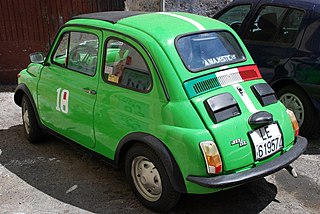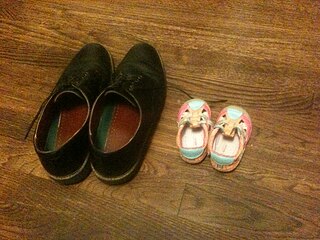Descriptive Adjectives in Italian: A Complete Guide for beginners
Descriptive adjectives are one of the most important and versatile grammatical categories in the Italian language. These adjectives describe and qualify the characteristics, qualities, and properties of a noun, which can refer to a person, object, place, action, or situation. Their main function is to enrich the meaning of the noun they modify, adding details that distinguish it from other similar nouns. For example:
- Un “gatto” (a “cat”) is simply a generic animal, but un “gatto bianco” (a “white cat”) is a cat that has a particular quality that makes it stand out from other cats.
- Un “albero alto” (a “tall tree”) refers to a tree with a specific characteristic (height), while un “albero verde” (a “green tree”) tells us something about its color.
Descriptive adjectives, therefore, not only modify the noun but also affect how the message is perceived, adding more detailed and precise nuances of meaning.
Gender and Number of Descriptive Adjectives
In Italian, the agreement between the adjective and the noun it refers to is essential. Descriptive adjectives must agree with the noun in gender (masculine or feminine) and number (singular or plural). This means that the adjective changes its form depending on the noun it modifies.
Examples of agreement:
- Un vestito vecchio (an old dress) (singular, masculine)
- Una casa vecchia (an old house) (singular, feminine)
- Dei vestiti vecchii (old dresses) (plural, masculine)
- Delle case vecchie (old houses) (plural, feminine)
Classes of Descriptive Adjectives
Descriptive adjectives are divided into three different classes depending on their endings. Each class follows specific grammatical rules that determine the form of the adjective based on the noun it modifies.
- First Class: Adjectives with Four Endings
Adjectives in the first class have four forms: one for the singular masculine, one for the singular feminine, one for the plural masculine, and one for the plural feminine.
Examples:
- Un abito nuovo (a new dress) (singular, masculine)
- Una casa nuova (a new house) (singular, feminine)
- Dei libri nuovi (new books) (plural, masculine)
- Delle case nuove (new houses) (plural, feminine)
- Second Class: Adjectives with Two Endings
Adjectives in the second class have only two endings: -e for both masculine and feminine singular, and -i for both masculine and feminine plural.
Examples:
- Un uomo forte (a strong man) (singular, masculine)
- Una donna forte (a strong woman) (singular, feminine)
- Degli uomini forti (strong men) (plural, masculine)
- Delle donne forti (strong women) (plural, feminine)
- Third Class: Adjectives with the Ending -a
Adjectives in the third class end in -a for both masculine and feminine singular forms, but change in the plural, where the ending becomes -i for the masculine and -e for the feminine.
Examples:
- Un uomo egoista (a selfish man) (singular, masculine)
- Una donna egoista (a selfish woman) (singular, feminine)
- Degli uomini egoisti (selfish men) (plural, masculine)
- Delle donne egoiste (selfish women) (plural, feminine)
Invariable Adjectives
Some adjectives do not change, regardless of the gender or number of the noun they modify. These adjectives are said to be “invariable,” which means that they retain the same form no matter whether they refer to a masculine or feminine noun, or whether the noun is singular or plural. For example, some colours are invariable.
Examples of invariable adjectives: Rosa (pink), blu (blue), marrone (brown)
- Due vestiti rosa (two pink dresses)
- Un cielo blu (a blue sky)
- Una giacca marrone (a brown jacket)
- Pari (even), dispari (odd)
- Un numero pari (an even number)
- Due numeri dispari (two odd numbers)
- Degli uomini perbene (well-behaved men)
- Delle donne perbene (well-behaved women)
Agreement of the Adjective with Multiple Nouns
When an adjective refers to more than one noun, the agreement follows the gender and number of the nouns:
- If all the nouns are masculine, the adjective will be in the plural masculine form:
- Paolo e Gianni sono stanchi (Paolo and Gianni are tired).
- If all the nouns are feminine, the adjective will be in the plural feminine form:
- Laura e Bruna sono stanche (Laura and Bruna are tired).
- If the nouns are of different genders, the adjective will be in the plural masculine form:
- Laura e i suoi amici sono stanchi (Laura and her friends are tired).
In some cases, if the agreement with the closest noun could create confusion, the adjective can be repeated:
- Ho comperato un cappotto e una giacca neri (I bought a coat and a jacket in black).
- Ho comperato scarpe e guanti neri (I bought shoes and gloves in black).
Position of the Descriptive Adjective
The position of the adjective in a sentence is never random and significantly affects the meaning of the sentence itself.
- Adjective after the noun: When the adjective is placed after the noun, it tends to indicate a distinctive, specific, or restrictive quality. For example: un libro interessante (an interesting book) – a book with a specific quality.
- Adjective before the noun: When the adjective is placed before the noun, it generally has a more general or ornamental value. For example: un interessante libro (an interesting book) – a book that is interesting but not necessarily distinguished from other books.
Some adjectives can completely change their meaning depending on their position:
- Un buon uomo (a good man – simple)
- Un pover’uomo (a poor man – pitiable, unfortunate)
- Una vecchia amica (an old friend – a long-time friend)
- Un’amica vecchia (an old friend – elderly)
Altered Adjectives
Altered adjectives express different shades of meaning through the use of diminutive, augmentative, or pejorative suffixes. Although this topic deserves a separate lesson, we’ll just briefly acknowledge it here.
Examples:
- Furbo (smart) can become furbetto (sly) (a minor type of smartness) or furbacchione (sly dog) (a negative connotation).
- Grande (big) can become grandissimo (very big) or grande (a big statue vs. a large statue).
Conclusion
Descriptive adjectives are essential in the Italian language and greatly contribute to the expression of complex concepts, enriching the language with nuances of meaning. Understanding the grammatical rules and their applications allows for precise and articulate use of adjectives, improving the ability to communicate effectively in Italian.
The following quiz is reserved for subscribers of our blog. If you would like to receive updates and free lessons like this one, you can subscribe for free below. The quiz is a great way to progress and improve your Italian. Subscribe for free and start studying with us!
(continues …)
This is a “freemium” quiz.
Log in or subscribe at no cost.
Get new free Italian language quizzes and your results in your inbox.
Descriptive Adjectives in Italian
Quiz
Please log in or subscribe to read the blog and try the quiz
Subscribe
- Access to our “freemium” content: lessons and quizzes
- Get new lessons in your inbox
- Get your quiz score by email
 autobus devo prendere per andare al Colosseo?
autobus devo prendere per andare al Colosseo? si trova la fermata più vicina?
si trova la fermata più vicina? posso comprare il biglietto? costano due biglietti?
posso comprare il biglietto? costano due biglietti? passa l'ultimo autobus?
passa l'ultimo autobus? si fa a prenotare il treno?
si fa a prenotare il treno? Con viaggi in aereo?
Con viaggi in aereo? ore di volo ci sono tra Roma e Chicago?
ore di volo ci sono tra Roma e Chicago?





